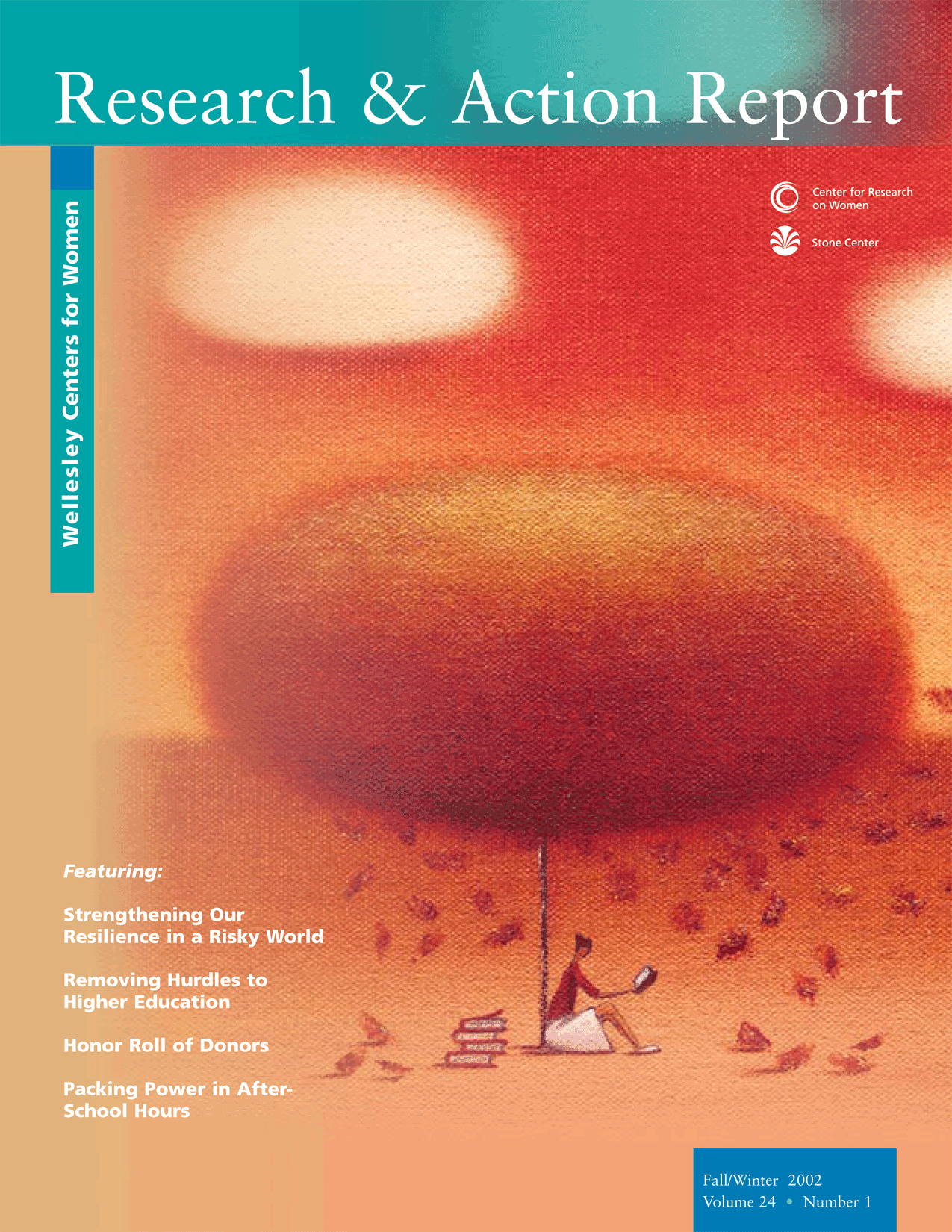Research & Action Report Fall/Winter 2002
This September, as thousands of men and women headed back to college in pursuit of higher education, many welfare recipients were deprived of this opportunity. Current restrictive welfare policies, with their stringent time limits and work requirements, make access to post-secondary education extremely difficult. Both the passage of the Personal Responsibility and Work Opportunity Reconciliation Act (PRWORA) of 1996 and the institution of Temporary Assistance to Needy Families (TANF) emphasize moving welfare recipients into the workforce as quickly as possible, making it difficult for them to pursue higher education. According to Haskins and Blank, writing in Poverty Research News (Joint Center for Poverty Research, 2001), the work-first approach has raised the employment rate without improving job quality, pushing low-income women in particular into low-wage, unstable jobs.
Time and again, higher education has proved to be a pathway out of poverty. According to Welfare Graduates: College and Financial Independence by Thomas Karier (1998), a four-year college degree can reduce the rate of welfare dependency by 88%. A woman holding a bachelor's degree can expect to earn 68% more per year than a woman who holds only a high school diploma (U.S. Bureau of Labor Statistics, 2000), Clearly, providing access to higher education can help reduce
dependency on welfare and provide a way out of poverty.
Since 1997, Women in Community Development (WICD), a Boston-based collaborative, has been providing low-income women with access to higher education. Created as a joint venture of Project Hope, the Women's Institute for Housing and Economic Development, and the College of Public and Community Services (CPCS) at the University of Massachusetts at Boston, this unique program is designed as an economic development strategy to lift women out of poverty and as a
community approach to build the leadership capacity of low-income women. It offers low-income women the opportunity to enroll in a four-year degree program with financial assistance in the form of tuition wavers, grants to cover student fees, and book stipends. The program also offers peer support, academic guidance, job referrals, professional-development opportunities, and leadership training.
Recently, with funding from the Nellie Mae Education Foundation, the Center for Research on Women conducted a yearlong evaluation of WICD programs. "One of the goals of the evaluation was to help the program better understand its work and to establish in-house monitoring, accountability, and evaluation activities to guide future program development," according to the study's principal investigator Fern Marx. The evaluation revealed that one of WICD's most outstanding accomplishments is the number and quality of its graduates. "WICD can be a model for how to get a low-income woman
on a professional career track instead of [getting stuck in] a low-paying job," commented one program participant. The evaluation showed that a whopping majority (over 90%) of participants showed interest in pursuing postgraduate studies. "At first, my goal was to get my B.A., and then when I entered WICD my goal was to get my M.A. As I moved along, I decidedI definitely needed to get my Ph.D.," responded another
participant.
Despite its many success stories, WICD faces challenges in finding both political and financial support. Many issues, such as more state aid for scholarships, require aggressive lobbying efforts. WICD's major challenge is to ensure that the 2002 reauthorization of TANF makes access to higher education a reality for these women.
In its current form, TANF puts several limits on women who are interested in higher education. "TANF makes distinctions between what can and cannot be counted as work activities, and nonvocational post-secondary education is not currently recognized as a work activity," says Marx. TANF permits only two years of college, which does not provide an adequate bridge to a bachelor's degree program. It also lacks essential vouchers for child care and has no funding for transportation.
"As TANF comes up for reauthorization at the end of September 2002, we would like to see the barriers to higher education reduced," says Marx. At present, there are arbitrary restrictions on the length of time that TANF recipients may participate in education or training. Removing these arbitrary restrictions and expanding the types of educational programs recipients can attend are a few of the critical changes that the reauthorization can bring. In addition, creative changes such as
developing new ways to encourage employers and educational institutions to offer additional programs using work-study arrangements or flexible scheduling of training and work will encourage the pursuit of higher education.
In the long run, regardless of all the hurdles, higher education holds the key to improving lives. The WICD study shows that not only did participants' personal relationships benefit from their experience, but also that they were able to serve as role models to friends and family members. Participants felt that their children learned the importance of education through their example. These women wanted to "give back
to the community" through their careers. One participant expressed the feelings of many: "I want to become a leader of a women's group, and maybe even a group of teenagers, since I feel that there are not enough positive role models in the lives of young, poor women."
For more information, visit www.wcwonline.org/wicd.


